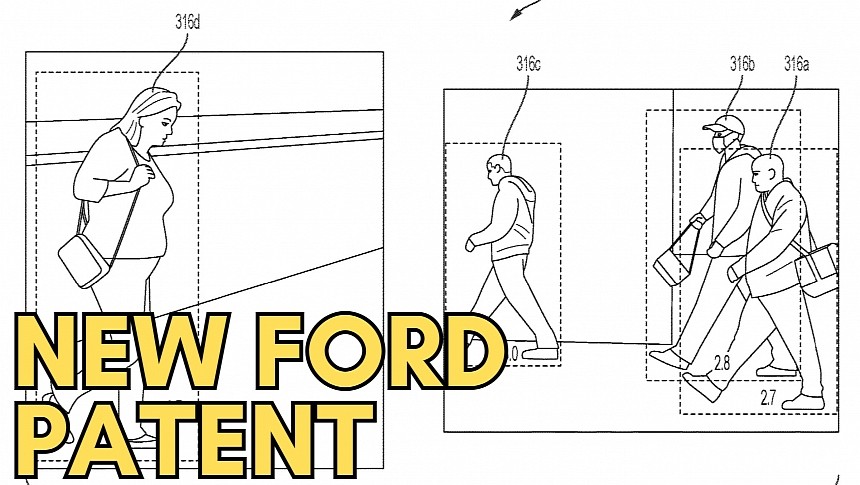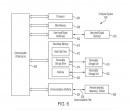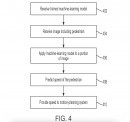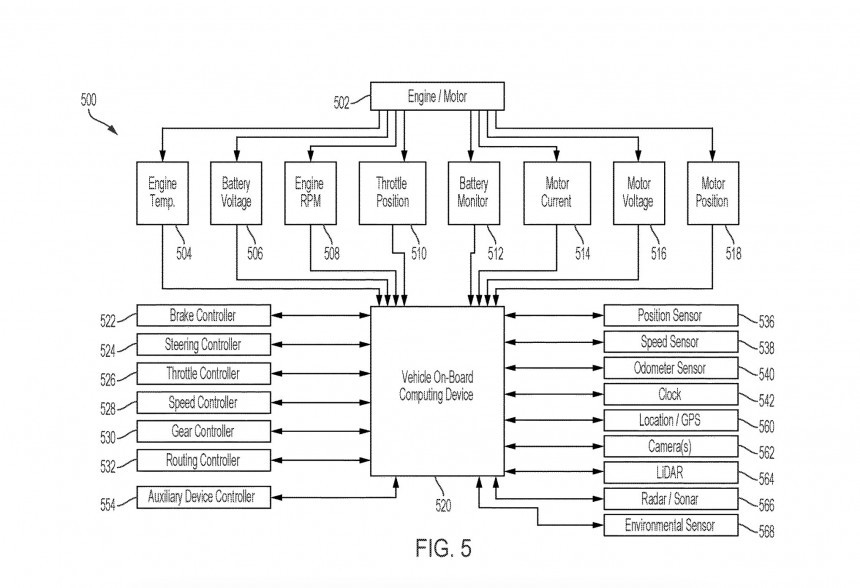Carmakers have been investing in safety technologies for quite some time, and new-generation vehicles already come with systems whose role is to detect pedestrians and automatically engage the brakes should they detect an increased likelihood of accidents.
With the aggressive investments in self-driving vehicles, car manufacturers are looking into ways to make all these concepts more effective, improving the detection and reaction processes to be more accurate and faster.
Ford has recently patented new technology specifically to help with prevention.
A system called "image-based pedestrian speed estimation" is primarily aimed at autonomous vehicles but can also land on regular vehicles to help prevent accidents involving pedestrians.
Ford's idea comes down to a simple idea. If the vehicle can estimate how fast a pedestrian is walking and determine their direction, they can anticipate if and when they could end up in front of the car.
In plain English, Ford's technology can spot pedestrians figure out where they're heading and how fast they'll reach the direction the vehicle uses. Based on further analysis, including the vehicle's speed, the system can determine the likelihood of an accident, triggering several safety technologies to avoid the collision, including braking and avoiding the estimated collision point.
Determining a pedestrian's speed isn't by any means an easy business. We're all different, we walk in different ways, and we sometimes slow down suddenly for reasons that a vehicle traveling on the road couldn't determine. Ford says machine learning would come to the rescue.
The carmaker explains that the first phase involves monitoring the road and acquiring a photo of the pedestrian. The system can process the image and conduct a machine-learning analysis that looks for potential matches with other profiles. In plain English, the system gets smarter as it spends more time on the road. It learns from the data it collects, so it could eventually build profiles based on certain data to determine patterns for groups of pedestrians. You might be surprised to learn that someone walks just like you, so the system could eventually find a match and predict your speed based on what it learned during a previous analysis.
However, it's not always that simple, so Ford says it can take a second image of the pedestrian and run a second analysis to extract essential data. In some cases, it could only analyze a single portion of an image, but if a secondary picture is taken, the easiest way to obtain the predicted speed is by comparing information available in both photos.
It means the system will process both images to establish a connection between them and determine a confidence level associated with the predicted speed.
More advanced implementations could also use other vehicle hardware to predict the direction and the walking speed with an approach that reminds of GPS (though this won't be based on image-based analysis and is not mentioned in this patent).
GPS calculates the time you need to travel between two points, eventually determining your speed. For example, if you're in point A and need 2 minutes to reach point B, a GPS can measure the distance between the two points and then calculate your speed using the basic math formula. It's why GPS systems are more accurate than the vehicle's speedometer, and I explained in this article why Google Maps and Waze might show a different speed than what you see on the dashboard.
A system installed on the vehicle can take separate photos and measure the distance between them, calculating how fast the pedestrian moved between the two points. The bigger challenge is to estimate the distance, especially because the vehicle wouldn't be able to access any GPS data. However, laser-based systems, sometimes employed in other safety systems that automatically engage the brakes in case of an imminent collision, could help with this approach.
Ford's technology could help autonomous vehicles become safer, but it would undoubtedly be a great upgrade for conventional cars, too. Systems to automatically warn of approaching pedestrians and engage the brakes have been around for several years, but Ford's proposal could make them more effective by adding a higher level of confidence when determining a potential accident.
The carmaker's technology is still in the patent stage, and there's no guarantee it'd ever make its way to production. Companies sometimes file patents just to protect their ideas, and considering the push for self-driving vehicles, I'm not surprised to see Ford increasingly more active in this space. Ford wants to become an important place in the autonomous vehicle world, and this technology could help it build safer models.
You can find the full patent, which includes more technical details about how the whole system is supposed to work once installed on a car, in the box after the jump. The patent application was filed in June 2022 and granted earlier this month.
Ford has recently patented new technology specifically to help with prevention.
A system called "image-based pedestrian speed estimation" is primarily aimed at autonomous vehicles but can also land on regular vehicles to help prevent accidents involving pedestrians.
Ford's idea comes down to a simple idea. If the vehicle can estimate how fast a pedestrian is walking and determine their direction, they can anticipate if and when they could end up in front of the car.
Determining a pedestrian's speed isn't by any means an easy business. We're all different, we walk in different ways, and we sometimes slow down suddenly for reasons that a vehicle traveling on the road couldn't determine. Ford says machine learning would come to the rescue.
The carmaker explains that the first phase involves monitoring the road and acquiring a photo of the pedestrian. The system can process the image and conduct a machine-learning analysis that looks for potential matches with other profiles. In plain English, the system gets smarter as it spends more time on the road. It learns from the data it collects, so it could eventually build profiles based on certain data to determine patterns for groups of pedestrians. You might be surprised to learn that someone walks just like you, so the system could eventually find a match and predict your speed based on what it learned during a previous analysis.
However, it's not always that simple, so Ford says it can take a second image of the pedestrian and run a second analysis to extract essential data. In some cases, it could only analyze a single portion of an image, but if a secondary picture is taken, the easiest way to obtain the predicted speed is by comparing information available in both photos.
It means the system will process both images to establish a connection between them and determine a confidence level associated with the predicted speed.
More advanced implementations could also use other vehicle hardware to predict the direction and the walking speed with an approach that reminds of GPS (though this won't be based on image-based analysis and is not mentioned in this patent).
A system installed on the vehicle can take separate photos and measure the distance between them, calculating how fast the pedestrian moved between the two points. The bigger challenge is to estimate the distance, especially because the vehicle wouldn't be able to access any GPS data. However, laser-based systems, sometimes employed in other safety systems that automatically engage the brakes in case of an imminent collision, could help with this approach.
Ford's technology could help autonomous vehicles become safer, but it would undoubtedly be a great upgrade for conventional cars, too. Systems to automatically warn of approaching pedestrians and engage the brakes have been around for several years, but Ford's proposal could make them more effective by adding a higher level of confidence when determining a potential accident.
You can find the full patent, which includes more technical details about how the whole system is supposed to work once installed on a car, in the box after the jump. The patent application was filed in June 2022 and granted earlier this month.








